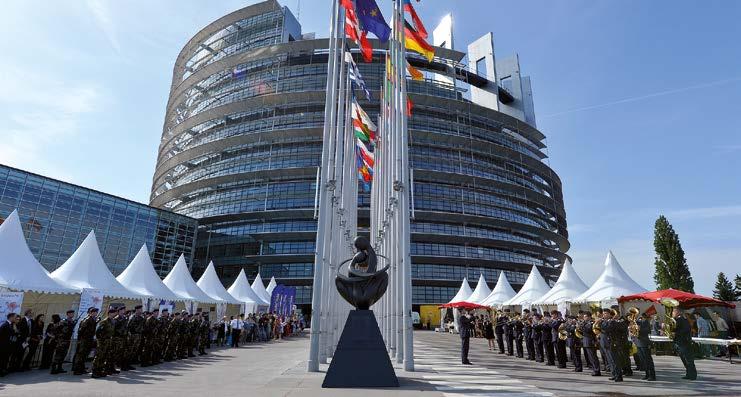European security and defence
particular to Mobile Tactical Communication (MoTaKo), which is one of the Bundeswehr’s high-priority procurement projects. Cooperation at this point would significantly improve the interoperability of both armed forces and close a capability gap on the German side that is often rightly criticised. Workshare: German-Dutch cooperation is thus already addressing very important questions regarding future European cooperation. This includes, for example, moving away from the ineffective and economically inefficient approach of maintaining equal or parallel capabilities in the armies of EU Member States, towards an efficient, cross-force leveraging of respective special capabilities and expertise. But strengthening interoperability and significantly reducing the number of weapons systems used in Europe through increased cooperation in the area of armaments also constitute additional priorities. Thus, German-Dutch cooperation today in many respects offers a blueprint for how to move forward on the path of military integration on a pan-European basis.
A European Framework – key for success It is clear that Europe will also have to play a more important role in security and defence policy in the future. Consequently, this also means that a robust security architecture will only be possible within a European framework. None of the individual European states today would be in a position to fully guarantee their own security – either in terms of having military capabilities or financing them. The statement made by German Finance Minister Olaf Scholz in a speech delivered in Paris on 29 August of this year, to the effect that he could envisage more mergers in the European arms industry, points in the right direction. The task before us now is to push ahead with the necessary political will to consolidate the security and defence industry in an effort to open up this sector and attain greater European autonomy.
Family picture of four defense ministers visiting the 1 (German/Netherlands) Corps in Münster, 22 June 2015. In the first line (left to right): Dutch Minister of Defense Jeanine Hennis-Plasschaert, U.S. Secretary of Defence Ash Carter, German Minister of Defense Dr Ursula von der Leyen, Norwegian Minister of Defense Ine Eriksen Søreide photo: 1GNC Münster, CC BY 2.0, Flickr.com
Backing Europe’s endeavour for PESCO by a common defence fund
Putting money where the mouth is by Andy Francis Stirnal, Berlin correspondent, The European – Security and Defence Union, Berlin
T
he European Union is about to launch a European Defence Fund – the EDF. The constant perceived failure of European defence marked an altered sense of mission, and the opportunity given by the negotiations of Europe´s new financial framework until 2027 was its originator. Additionally, shifts in geopolitics and alliances could cause dark clouds to sweep over Europe. But the future is bright! Incentives for research, development and acquisition foster an innovative and competitive European defence industry, stimulate the development of an “internal defence market” and a technological and industrial base that meets Europe’s security and defence needs.
Closing capability gaps At a high-level conference on the EDF that took place in Vienna in September 2018, various actors from politics, military and industry expressed their expectation that the EDF could close existing capability gaps. Conceivable, but under difficult conditions. Governments still largely plan for and invest on a national basis and they still have different capability development priorities. The path dependencies are enormous, the investment cycles in defence extremely long, the market quite fragmented with very uneven national industrial bases. A total amount of 13 billion for the 7 year period until 2027 represents, in theory, a clear and strong incentive to develop state-of-the-art and fully interoperable technology and equipment. Still, research and development of prototypes and products are particularly expensive in defence and entail significant technical and financial risks that, too often, neither companies nor Member States wish to bear on their own. As a consequence, many innovative ideas do not make it to market. This applies all the more to highly disruptive technologies. Bridging this ‘valley of death’ is a declared aim of the EDF which shall be reached via an acquisition and procurement facility that is linked directly to PESCO. Projects selected and qualified as “PESCO-projects” will benefit from increased funding rates, while Member States will have to guarantee the procurement of developed products. Using
51

















